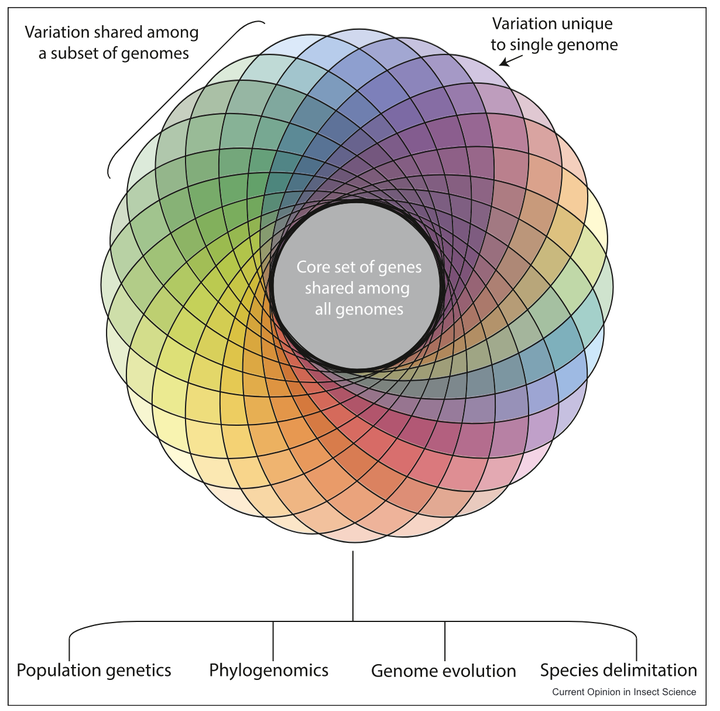Genomics reveals widespread hybridization across insects with ramifications for species boundaries and invasive species
 Image credit: M. San Jose
Image credit: M. San JoseAbstract
As the amount of genomic data for nonmodel taxa grows, it is increasingly clear that gene flow across species barriers in insects is much more common than previously thought. In recent years, the decreased cost and increased accuracy of long-read sequencing has enabled the assembly of highquality reference genomes and chromosome maps for nonmodel insects. With this long-read data, we can now not only compare variation across the genome among homologous genes between species, which has been the basis of phylogenetics for more than 30 years, but also tease apart evidence of ancient and recent hybridization and gene flow. The implications of hybridization for species adaptation may be more positive than previously considered, explaining its prevalence across many groups of insects. Unfortunately, due to anthropogenic actions, some pest species appear to be benefitting from hybridization and gene flow, facilitating future invasions.